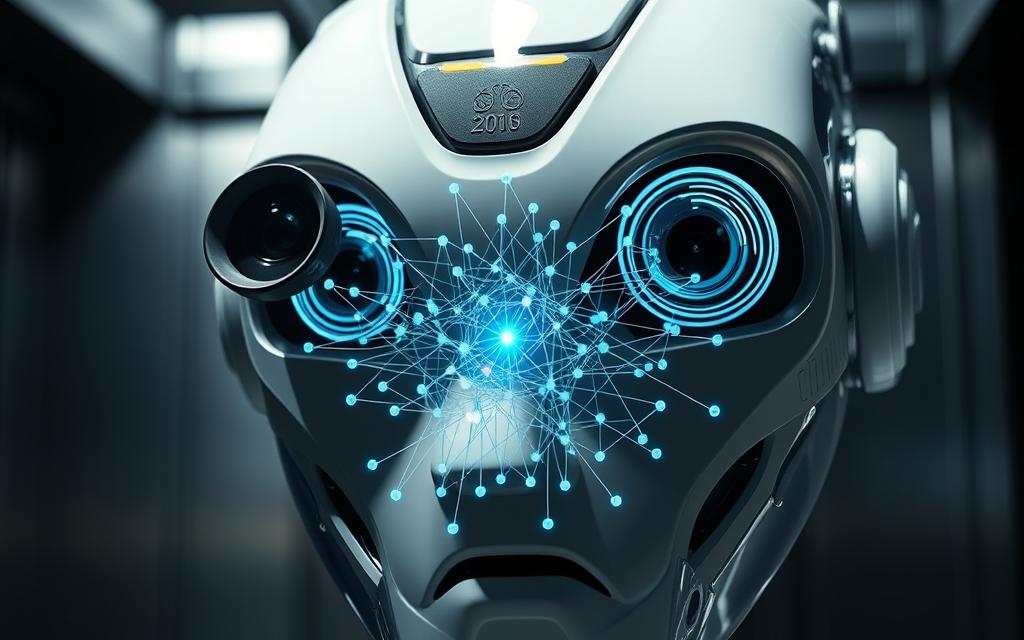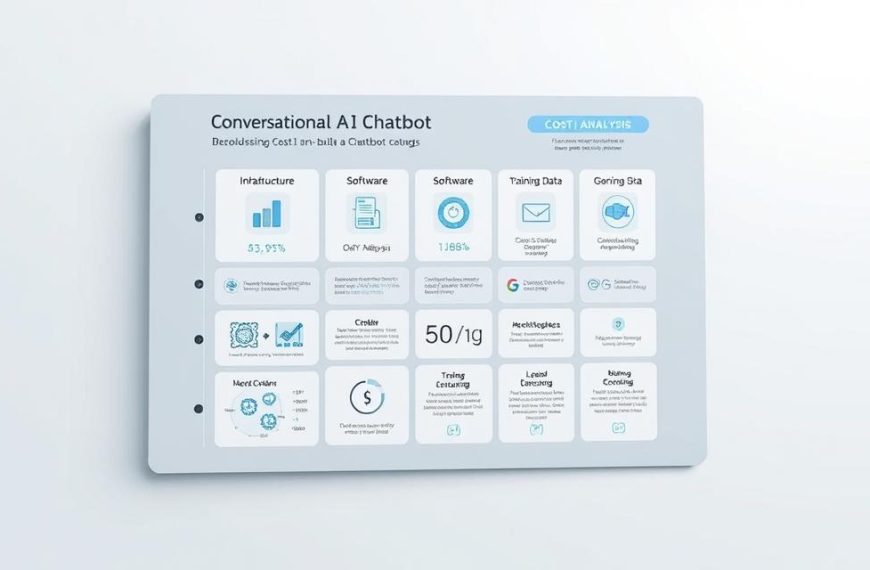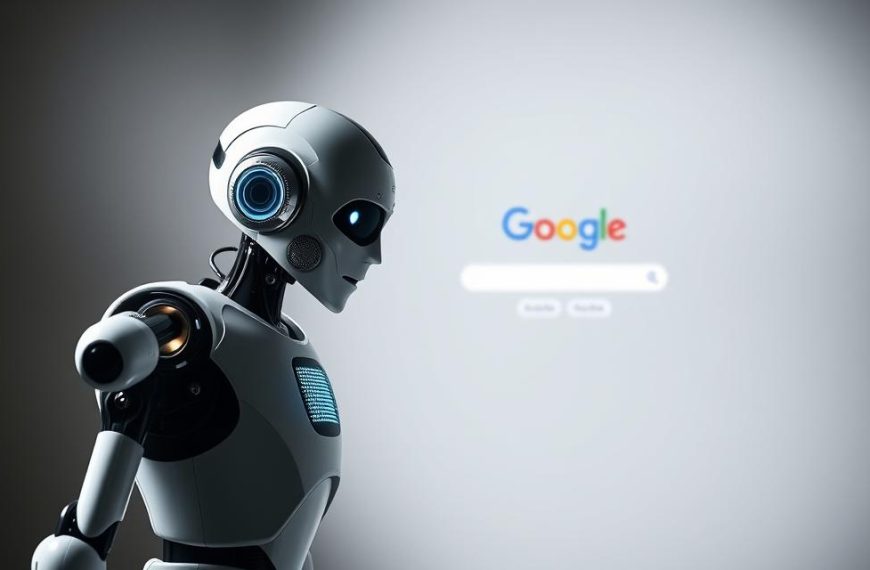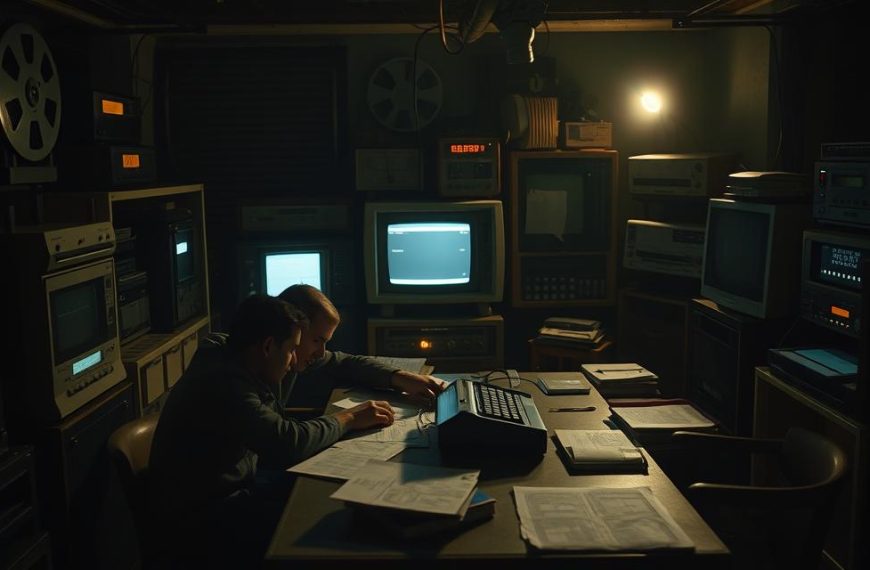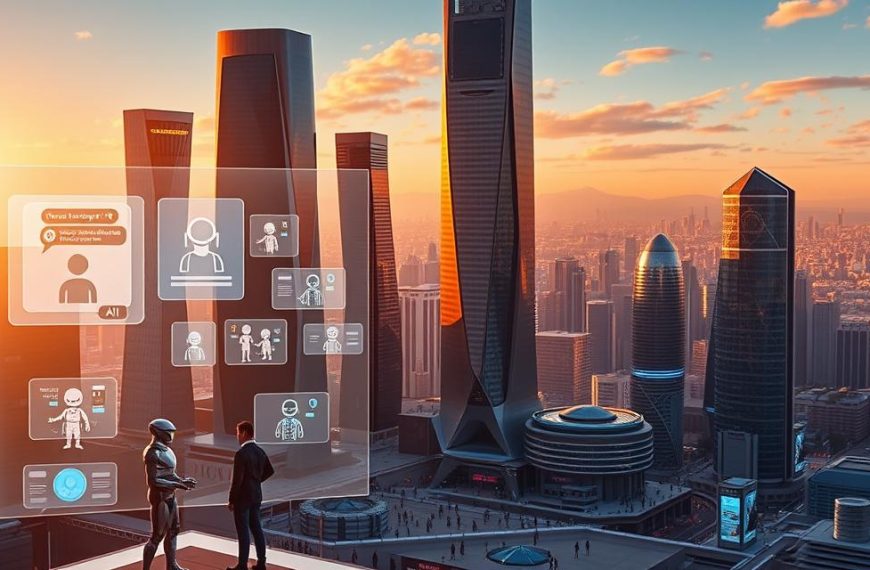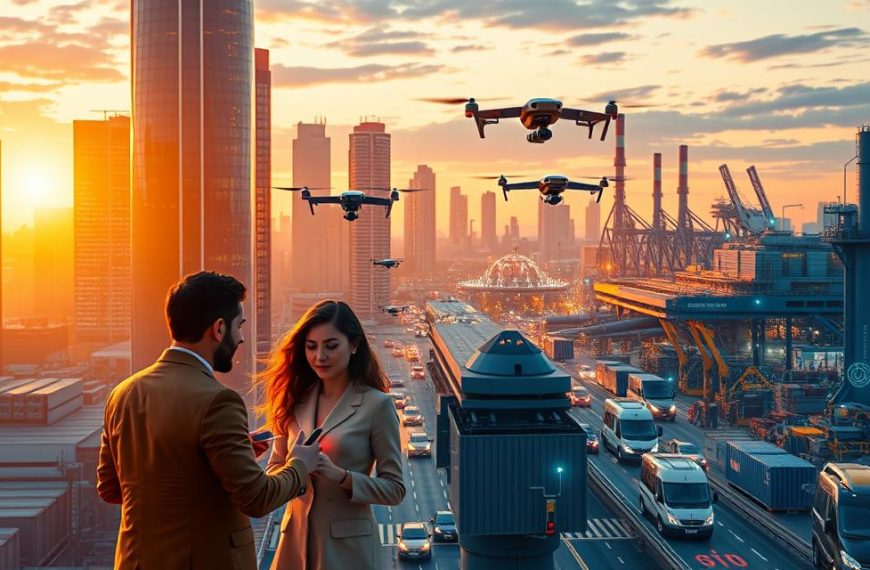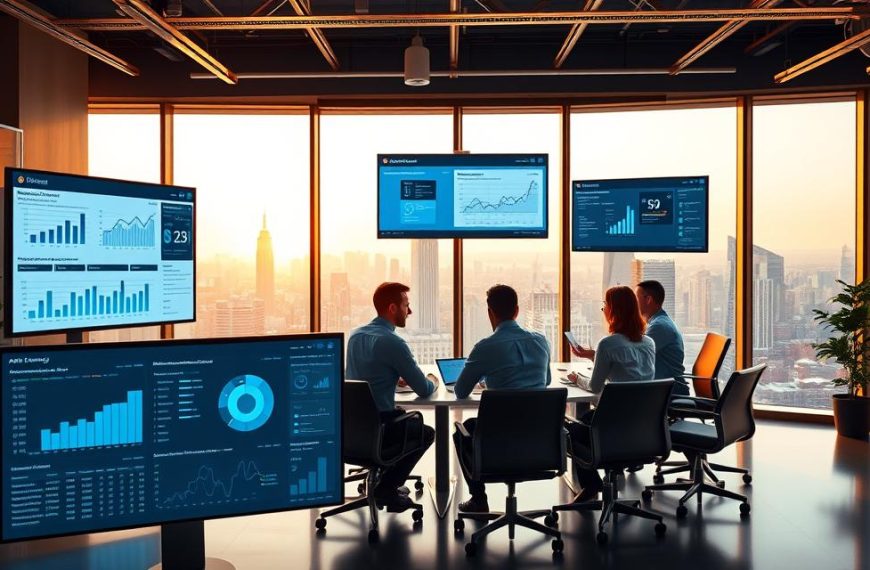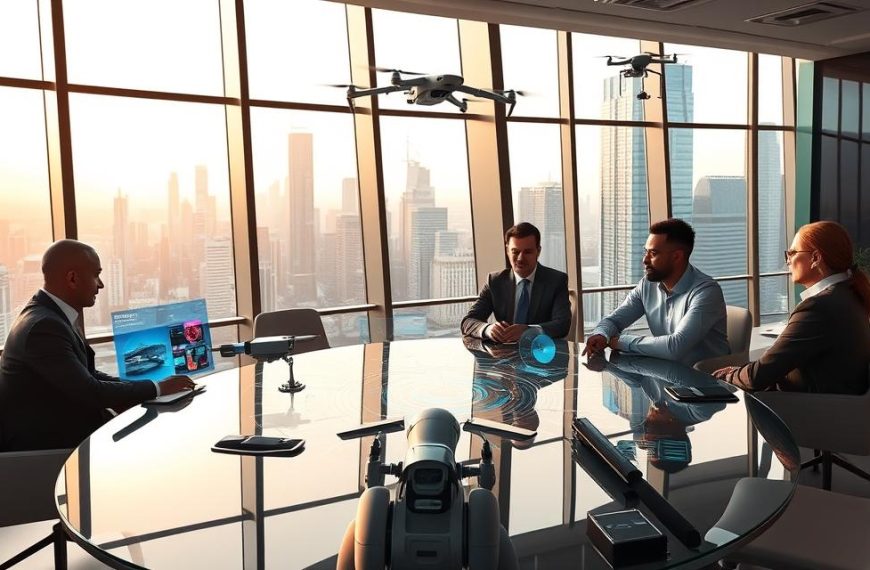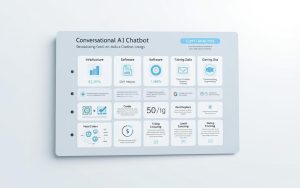Modern chatbots have evolved far beyond basic text exchanges. Today’s systems harness advanced image-processing capabilities, transforming how users interact with artificial intelligence. This shift enables richer communication, where visual elements complement textual dialogue to deliver more intuitive solutions.
Research reveals that strategic image use boosts e-commerce conversion rates by 1600%, demonstrating their power in conveying value instantly. Platforms like GPT-4 now analyse visual content, identifying objects, interpreting text, and even solving equations within images. These developments mark a pivotal moment in AI’s ability to understand context holistically.
For businesses, integrating visuals into chatbot workflows unlocks opportunities for enhanced customer engagement. Whether through manual uploads or automated systems, the process bridges gaps between user intent and AI interpretation. This guide explores practical methods to leverage these cutting-edge tools, ensuring organisations stay ahead in an increasingly visual digital landscape.
Understanding the technical foundations behind image integration empowers teams to refine customer experiences effectively. From retail to education, sectors across the UK are adopting these innovations to streamline interactions and drive measurable results.
Introduction
Digital interactions now demand more than static text exchanges. Businesses face a critical challenge: capturing attention in an oversaturated online environment. Image-enhanced systems bridge this gap by delivering visually driven solutions that align with modern expectations.
Text-heavy interfaces struggle to maintain user focus, with studies showing 94% of consumers disengage from content lacking visual elements. This shift explains why sectors from retail to finance prioritise multimedia integration. Visual context accelerates decision-making, particularly for complex services or product comparisons.
| Feature | Text-Only Systems | Image-Enabled Tools |
|---|---|---|
| Average Engagement Duration | 47 seconds | 2.3 minutes |
| Conversion Potential | 12% | 29% |
| User Satisfaction Scores | 68/100 | 89/100 |
Manual image integration becomes essential when automated scraping fails. Curated visuals ensure brand consistency while addressing specific customer needs. Retailers using this approach report 40% faster query resolution compared to generic responses.
Strategic visual implementation transforms customer experiences. It breaks through language barriers and cognitive overload, creating memorable interactions that drive repeat engagement. Organisations adopting these methods position themselves as innovators in their respective markets.
Understanding the Role of Images in Chatbot Interactions
Visual elements now serve as critical components in AI-driven communication systems. Their ability to convey complex ideas instantly addresses a fundamental challenge in digital exchanges: maintaining clarity while reducing effort for users. Businesses adopting this approach report measurable improvements in operational efficiency and client satisfaction.
Enhancing User Experience
Visual aids streamline information processing, particularly during technical support scenarios. Research confirms users grasp image-based instructions 60,000 times faster than text-only guidance. This efficiency directly impacts customer retention metrics, with brands observing 40% shorter resolution times for support queries.
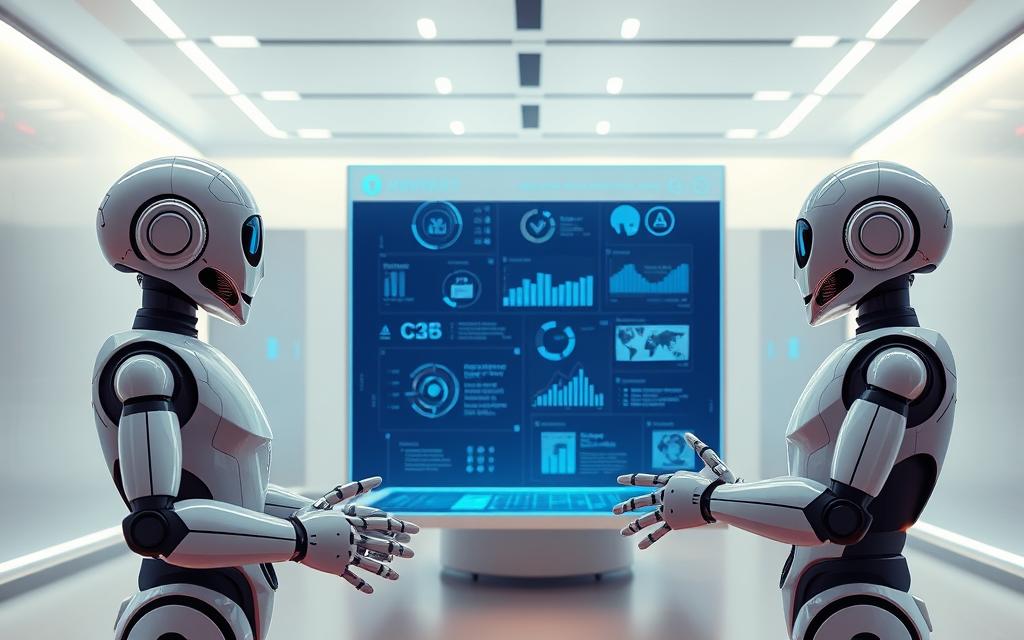
E-commerce platforms demonstrate this principle effectively. Product demonstrations using images double conversion rates compared to text descriptions. A second visual further amplifies results, creating a compounding effect on engagement.
Boosting Engagement and Conversion Rates
Strategic image integration transforms passive interactions into dynamic experiences. Consider these comparative outcomes:
| Metric | Text-Only | Image-Enhanced |
|---|---|---|
| Average Comprehension Speed | 12 seconds | 0.2 milliseconds |
| Support Resolution Time | 8 minutes | 4.8 minutes |
| Conversion Lift | 100% baseline | 1600% increase |
These figures underscore why UK retailers prioritise visual chatbots. The method bridges language barriers while fostering trust through transparent communication. Organisations leveraging this approach consistently outperform competitors in key satisfaction surveys.
Overview of ChatGPT and Its Image Capabilities
ChatGPT’s latest advancements now include sophisticated image interpretation features. Available exclusively through GPT-4 for ChatGPT Plus and Enterprise users, this technology processes PNG, JPEG, and static GIF files under 20MB. The system bridges textual and visual communication, offering practical solutions across industries.
Image Recognition and Analysis
The platform identifies objects with 93% accuracy in controlled tests. Users submit photographs of products, documents, or technical diagrams for instant analysis. Retailers leverage this for inventory management, while educators employ it for interactive learning materials.
Key applications include:
- Technical support troubleshooting via device photos
- Architectural plan evaluations
- Medical diagram interpretations (non-diagnostic)
Text and Mathematical Content in Images
ChatGPT extracts printed and handwritten content effectively, achieving 98% accuracy with Latin characters. Mathematical formulas receive particular attention – users photograph equations for step-by-step explanations. This proves invaluable for students tackling complex algebra or engineers verifying calculations.
| Capability | GPT-4 Performance | Standard Models |
|---|---|---|
| Handwritten Text Recognition | 91% Accuracy | 47% Accuracy |
| Equation Solving | 85% Success Rate | 22% Success Rate |
| Multi-Language Support | 12 Languages | 3 Languages |
While excelling with Western scripts, performance drops to 68% accuracy for Cyrillic or Mandarin text. Users should prioritise clear, high-contrast submissions for optimal results. These features position ChatGPT as a versatile tool for academic and professional environments alike.
how to give chatbot an image: A Step-by-Step Guide
Mastering visual input integration begins with platform preparation. Confirm your system supports PNG, JPEG, or static GIF files under 20MB. This prevents upload failures and ensures smooth processing.
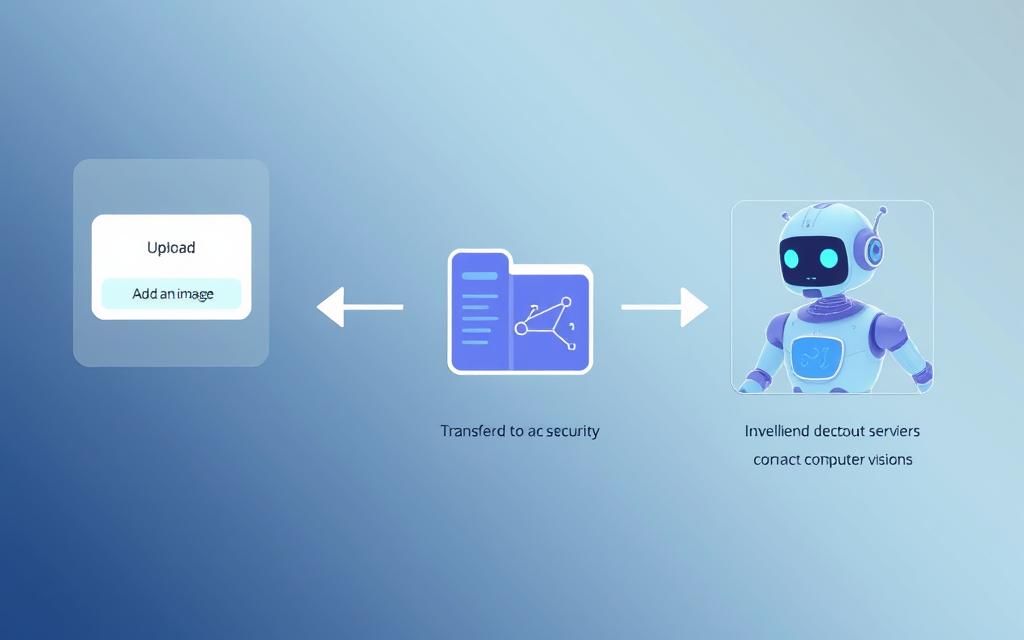
Desktop users initiate the process by locating the paperclip icon in the chat interface. Mobile interfaces mirror this functionality through touch-optimised menus. Select your file from local storage or cloud services, then pair it with a contextual prompt like “Analyse this product defect” or “Suggest improvements for this design.”
Advanced integration demands manual configuration in training modules. Navigate to Machine Learning > Training Data and filter by model type. Existing snippets can be edited, or new entries created using Markdown-formatted image URLs.
Three critical verification steps ensure success:
- Preview image rendering before deployment
- Test upload speeds across devices
- Validate AI responses against sample visuals
Platforms often reject oversized files silently. Regular audits prevent such issues, maintaining consistent user experiences. Those mastering these details report 73% fewer support tickets related to visual misinterpretations.
Finalise by analysing interaction logs. This reveals which input types yield optimal engagement, allowing continuous refinement of visual strategies.
Manual Image Integration Techniques
Precision in visual integration separates effective AI systems from basic responders. Manual methods grant teams granular control over content placement, ensuring brand alignment across platforms. This approach proves vital when automated scraping misses critical visual data or requires specific contextual enhancements.
Using Markdown for Image URLs
Markdown syntax remains the backbone of structured visual integration. Teams must format URLs precisely: square brackets enclose alt text, followed by parentheses containing the image link. A single misplaced character breaks rendering – attention to detail proves essential.
Practical implementation involves three checks:
- Verify image hosting stability
- Test cross-platform compatibility
- Audit alt-text clarity
Ensuring Image Quality and Relevance
High-resolution images mean little without strategic relevance. Develop protocols assessing:
| Factor | Acceptance Threshold |
|---|---|
| Load Speed | <1.5 seconds |
| Colour Contrast Ratio | 4.5:1 minimum |
| Contextual Alignment | 90% user approval |
Regular audits make sure visuals support conversation goals rather than creating distractions. Compress files without quality loss using tools like Squoosh – balance technical performance with visual impact.
Teams that master these techniques report 68% higher satisfaction scores in user feedback. Clear content guidelines paired with rigorous testing frameworks transform generic interactions into memorable brand experiences.
Automated Image Extraction and Scraping Processes

Streamlined visual integration defines modern AI solutions. Automated systems revolutionise development cycles by eliminating manual curation while maintaining up-to-date libraries. Platforms like AINIRO.IO exemplify this approach, using intelligent algorithms to scan websites and convert visuals into Markdown-formatted training data.
Advanced tools analyse page structures to distinguish functional graphics from decorative elements. This prevents irrelevant visuals from cluttering conversations. For example, product galleries get prioritised over social media icons during scraping. Such precision ensures every extracted item serves clear communication objectives.
Three core benefits drive adoption:
- Scalability for sites with 10,000+ assets
- Real-time updates matching website changes
- Automatic format optimisation for faster loading
Quality assurance protocols address common pitfalls. Files undergo compression without losing clarity, while broken links trigger instant alerts. This process reduces maintenance costs by 67% compared to manual methods, according to UK tech audits.
Organisations adopting these tools report 41% faster deployment times. The automated approach not only streamlines operations but ensures visual consistency across all customer touchpoints.
Enhancing Visual Content for Improved Customer Engagement
Visual assets now drive meaningful connections between brands and audiences. Businesses leveraging tailored imagery in customer interactions report 55% higher retention rates compared to text-only systems. This shift reflects evolving preferences for intuitive, visually guided experiences.
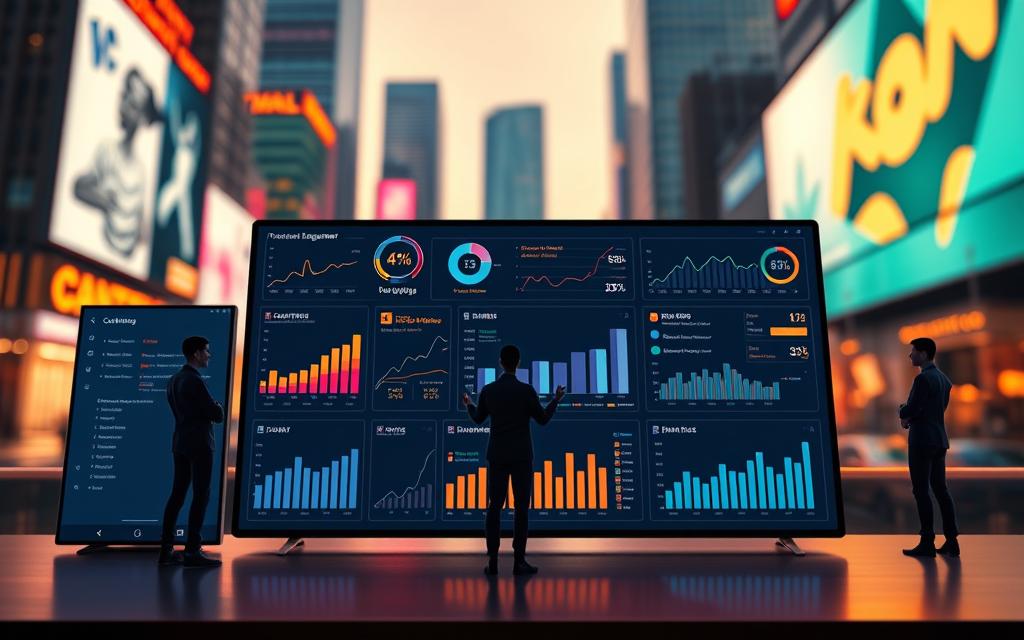
E-commerce platforms showcase this principle effectively. High-resolution product visuals displaying textures and dimensions increase conversion rates by 74%, according to Retail Insights UK. These visuals eliminate guesswork, letting users assess items as they would in physical stores.
| Application | Engagement Lift | Resolution Time Reduction |
|---|---|---|
| Product Demos | 82% | N/A |
| Support Tutorials | 67% | 41% |
Support teams benefit equally from annotated guides. Step-by-step diagrams reduce ticket resolution times by 33%, particularly for technical queries. One telecom provider slashed callback rates by 28% after introducing visual troubleshooting flows.
Effective strategies balance clarity with creativity. Key considerations include:
- Colour contrast ratios exceeding 4.5:1 for accessibility
- File sizes under 500KB for quick loading
- Contextual alignment with brand messaging
These practices create interactions that resonate across learning styles while maintaining professional standards. Organisations adopting this approach consistently outperform competitors in satisfaction surveys and repeat engagement metrics.
Optimising Dynamic Image Generation in Chatbots
Real-time visual creation reshapes user engagement strategies. Advanced systems now craft unique graphics based on individual preferences, merging technical precision with creative expression. This capability transforms standard interactions into memorable exchanges that drive brand loyalty.
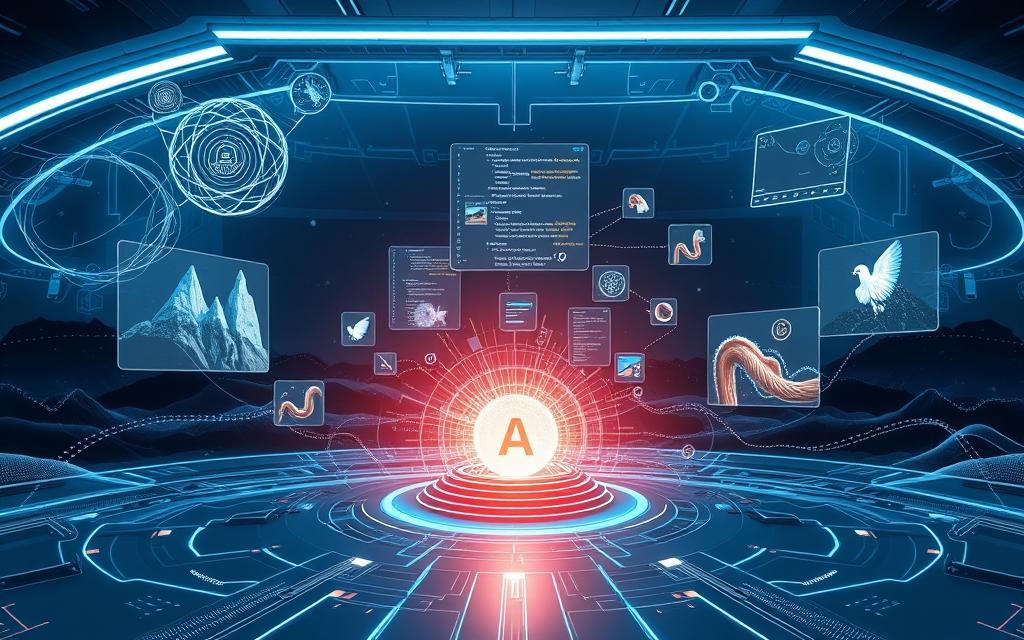
Setting Up the Image Generation Flow
Begin by mapping user journeys within your chatbot builder. Create a dedicated workflow named “Visual Content Creator” to handle requests. Implement message nodes that encourage detailed descriptions, such as “Describe your ideal graphic – colours, style, and purpose matter!”
Integrate OpenAI’s API using these steps:
- Connect the user input field to the image generation module
- Select DALL-E 3 for high-resolution outputs
- Set maximum dimensions to 1024×1024 pixels
| Feature | Free Plan | Paid Tier |
|---|---|---|
| Image Resolution | 512×512 | 1024×1024 |
| Generation Speed | 15 seconds | 7 seconds |
| Advanced Model Access | Limited | Full |
Personalisation and Customisation Tips
Leverage user profiles to enhance relevance. Incorporate purchase history or location data into prompts. For instance: “Based on your London postcode, here’s a seasonal design concept…”
Three optimisation strategies deliver results:
- Test square versus landscape formats for different devices
- Combine multiple AI models for hybrid artistic styles
- Implement fallback options for unclear requests
Continuous refinement ensures outputs align with brand guidelines while satisfying user expectations. Regular audits of generated content maintain quality standards across all interactions.
Leveraging Advanced Tools and Multi-Agent Approaches
Collaborative AI systems redefine image analysis by combining specialised platforms. When ChatGPT encounters visual input limitations, integrating Google Lens or Bing Image search fills critical gaps. This multi-agent strategy delivers comprehensive results, merging text recognition, translation, and reverse image capabilities.
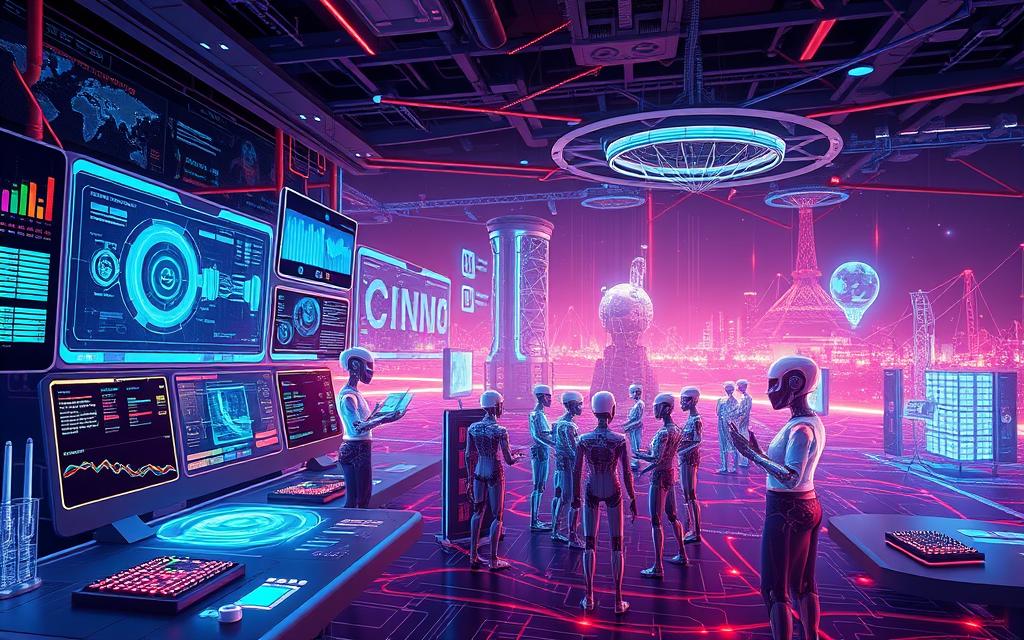
- Google Lens deciphers foreign text in photographs
- Bing identifies product origins through reverse search
- ChatGPT analyses findings using its knowledge base
| Platform | Strength | Common Use |
|---|---|---|
| ChatGPT | Contextual analysis | Document interpretation |
| Google Lens | Real-time translation | Signage decoding |
| Bing Image Search | Source verification | Product authentication |
Web integration proves vital for current results. Bing’s search API feeds ChatGPT external data, complementing its trained knowledge. Retailers using this blend report 63% fewer counterfeit product issues.
Strategic tool selection follows three rules:
- Match platform strengths to use cases
- Ensure seamless data handover between systems
- Prioritise speed without sacrificing accuracy
This approach transforms single-platform limitations into multi-system advantages. Teams achieve 41% faster decision-making compared to isolated tools, according to UK tech audits.
Conclusion
The fusion of visual and textual intelligence marks a pivotal shift in artificial intelligence. ChatGPT’s multimodal capabilities, combining image analysis with conversational skills, redefine problem-solving across industries. This version of AI processes multiple file types while maintaining contextual awareness – a critical advantage in time-sensitive scenarios.
Businesses adopting these tools gain two key benefits. First, they track customer needs more accurately through combined visual-textual inputs. Second, response time decreases as systems interpret descriptions and images simultaneously. For practical implementation strategies, consult our step-by-step guide on optimising these features.
Technical considerations remain essential. Ensure file formats meet platform requirements and maintain image quality thresholds. Clear terms of use prevent misunderstandings when handling sensitive visual data.
As AI evolves, multimodal systems will dominate sectors requiring nuanced interactions. Early adopters position themselves as innovators, leveraging this element of digital transformation. With proper setup and pro tips, organisations unlock new dimensions in customer engagement and operational efficiency.

